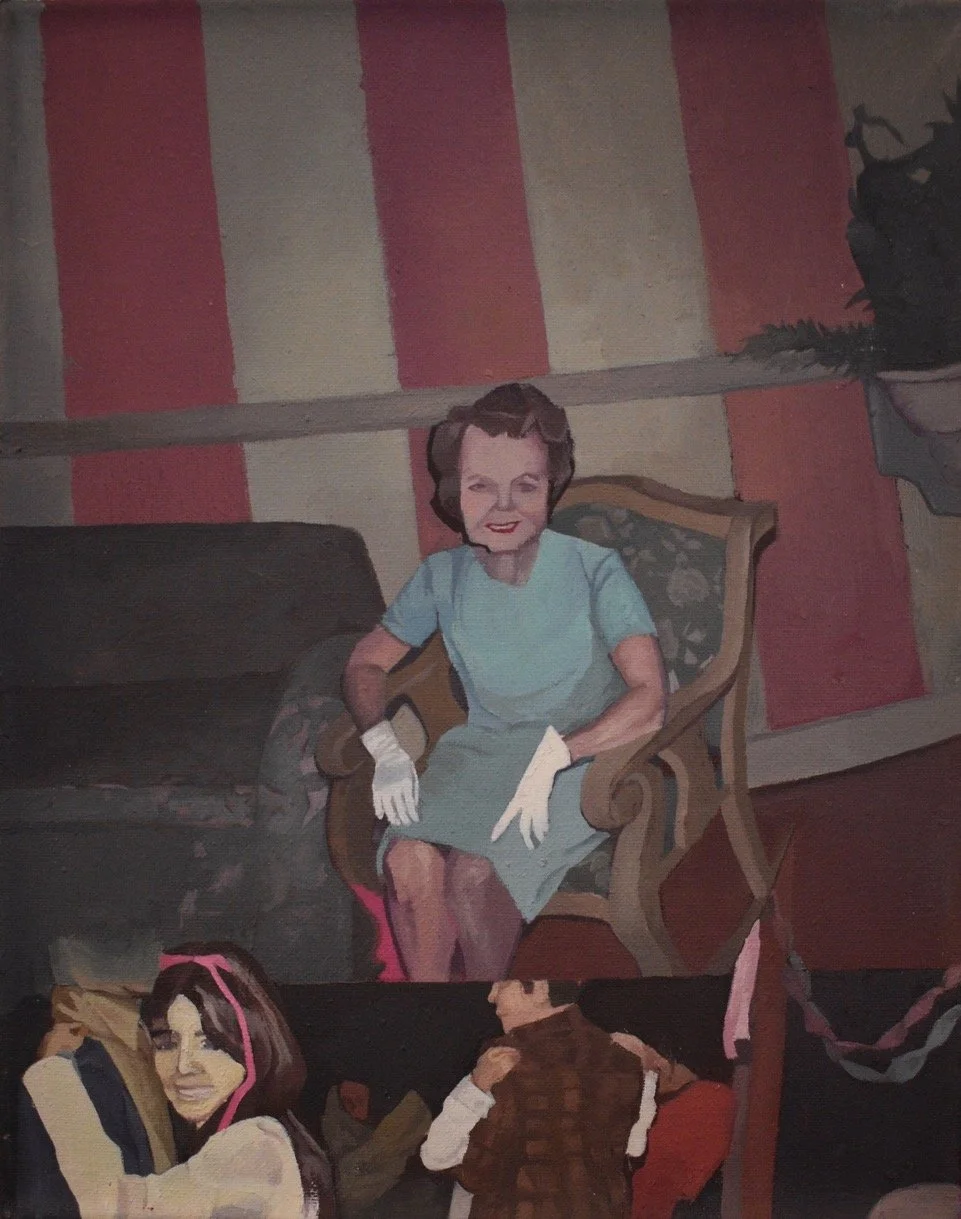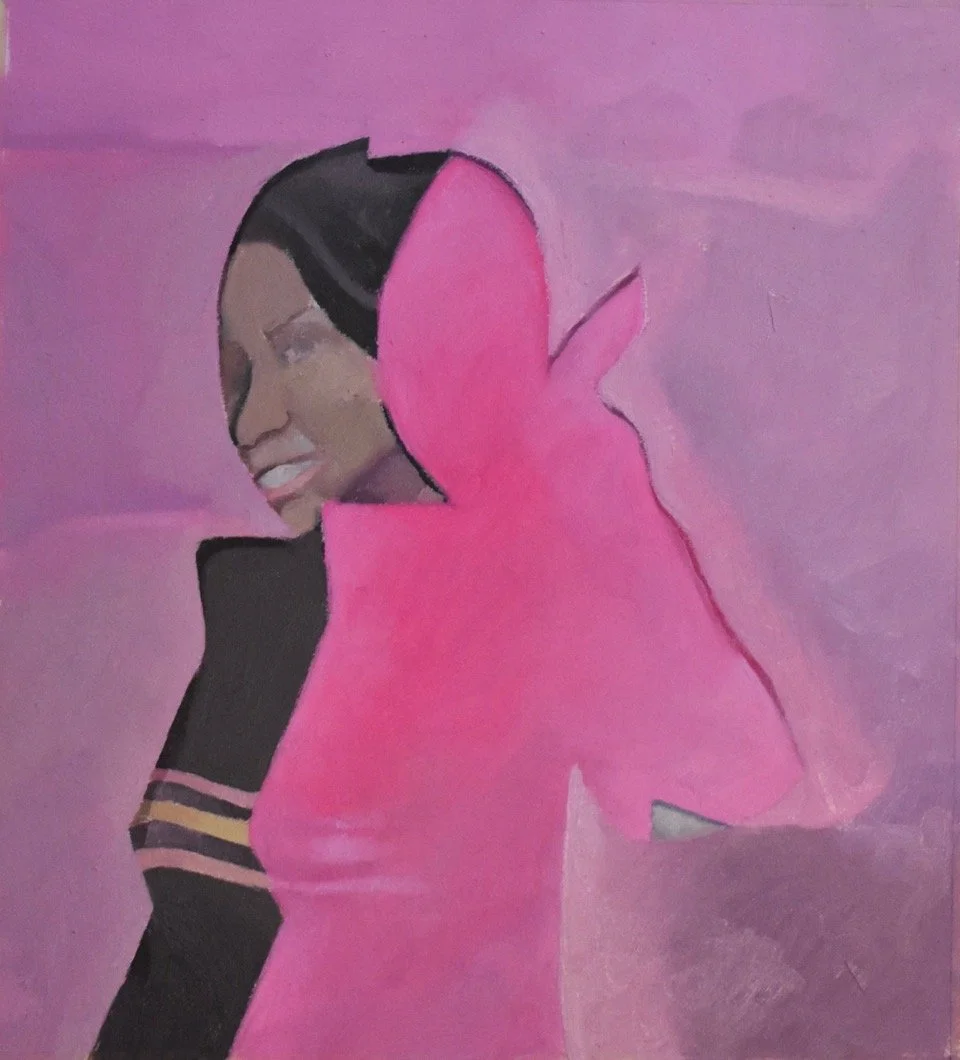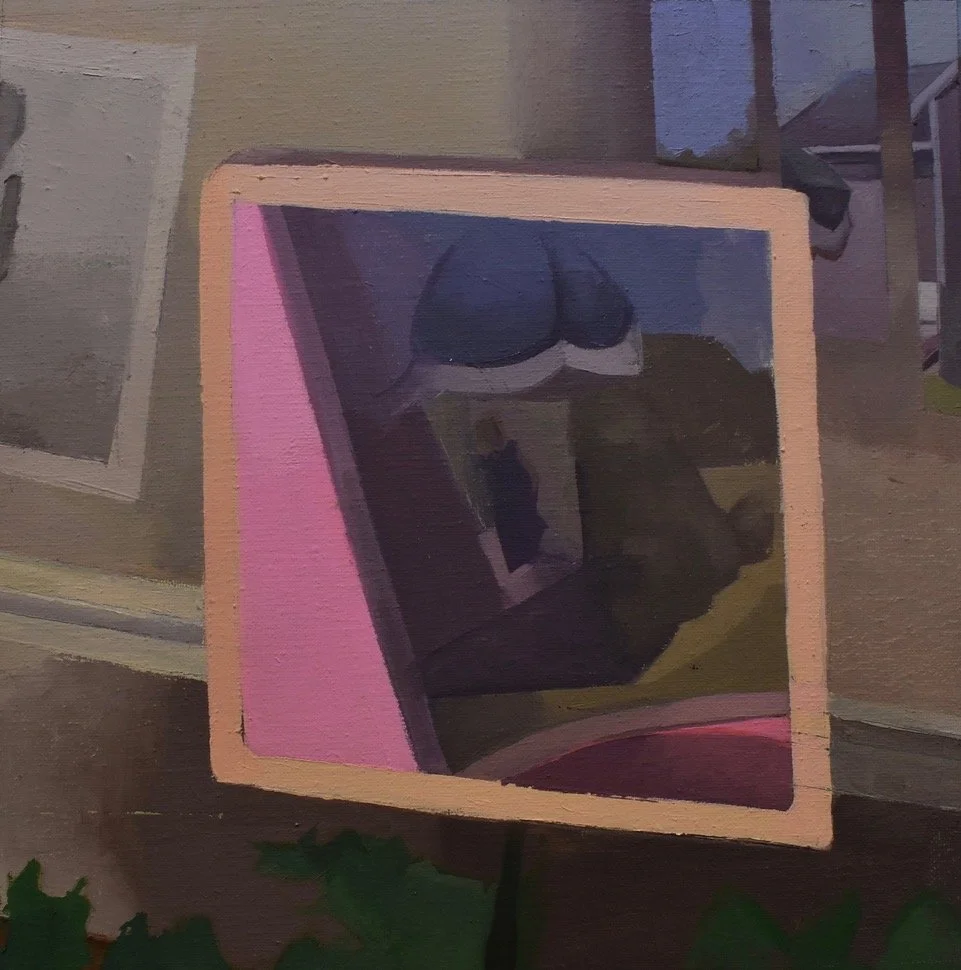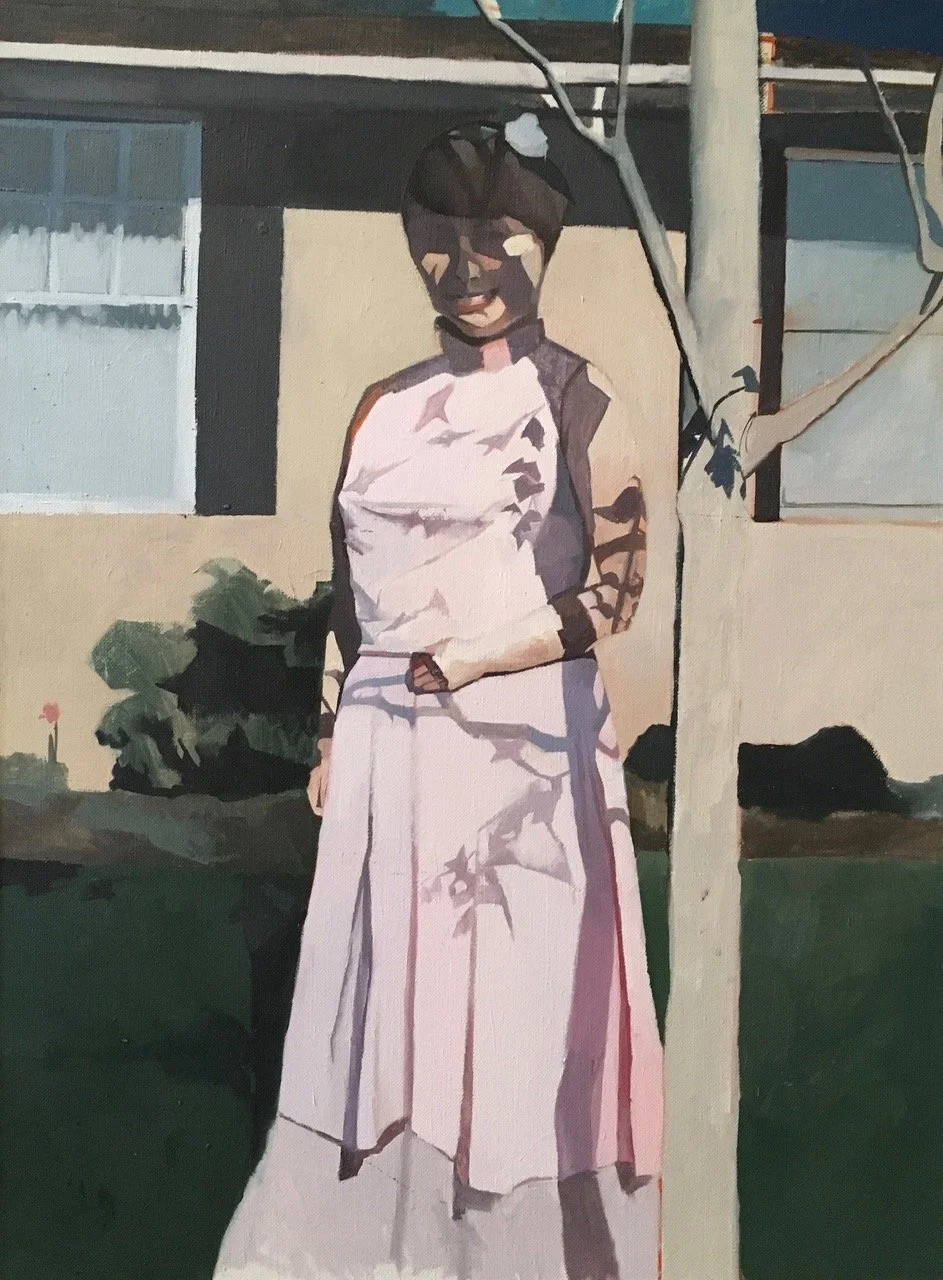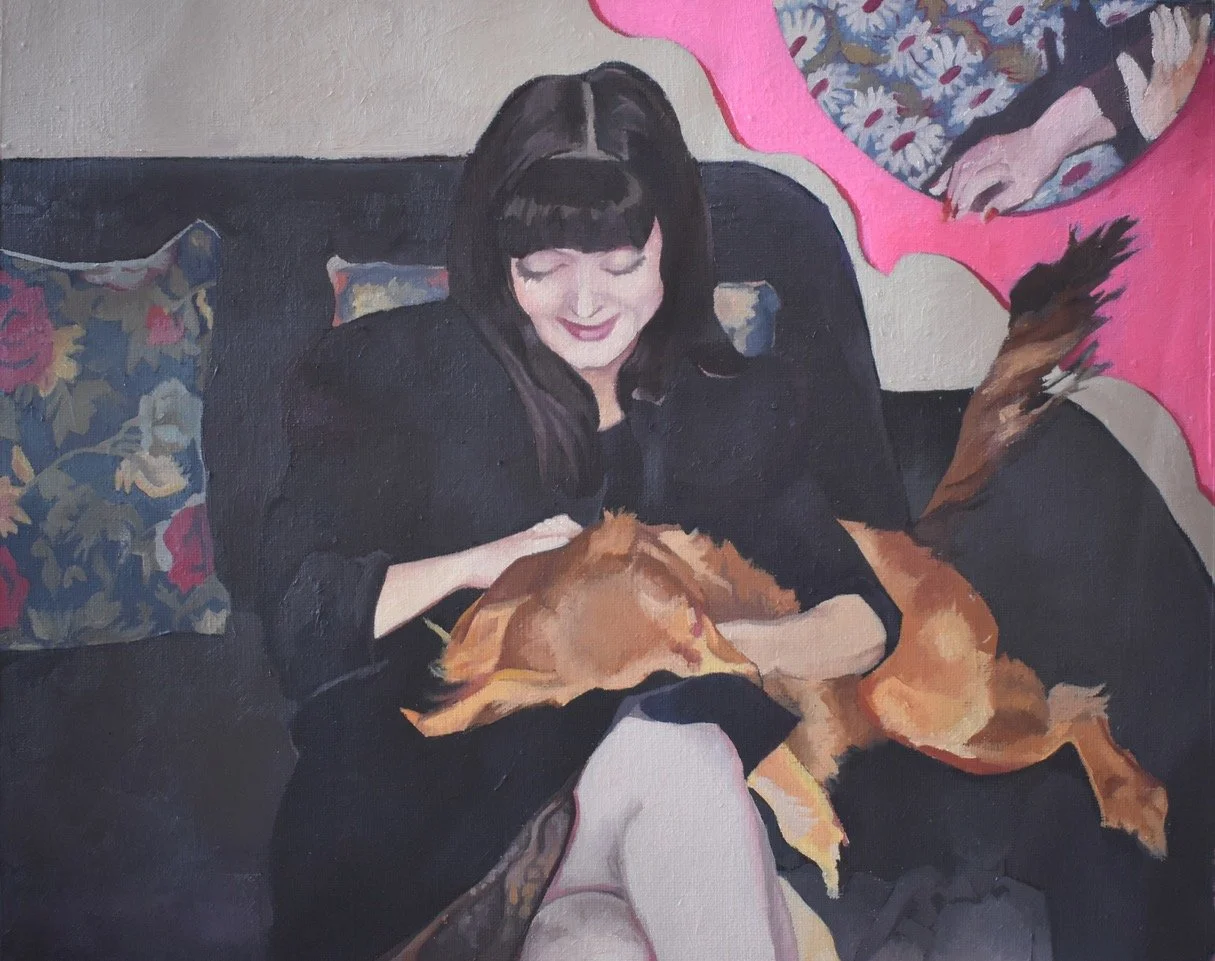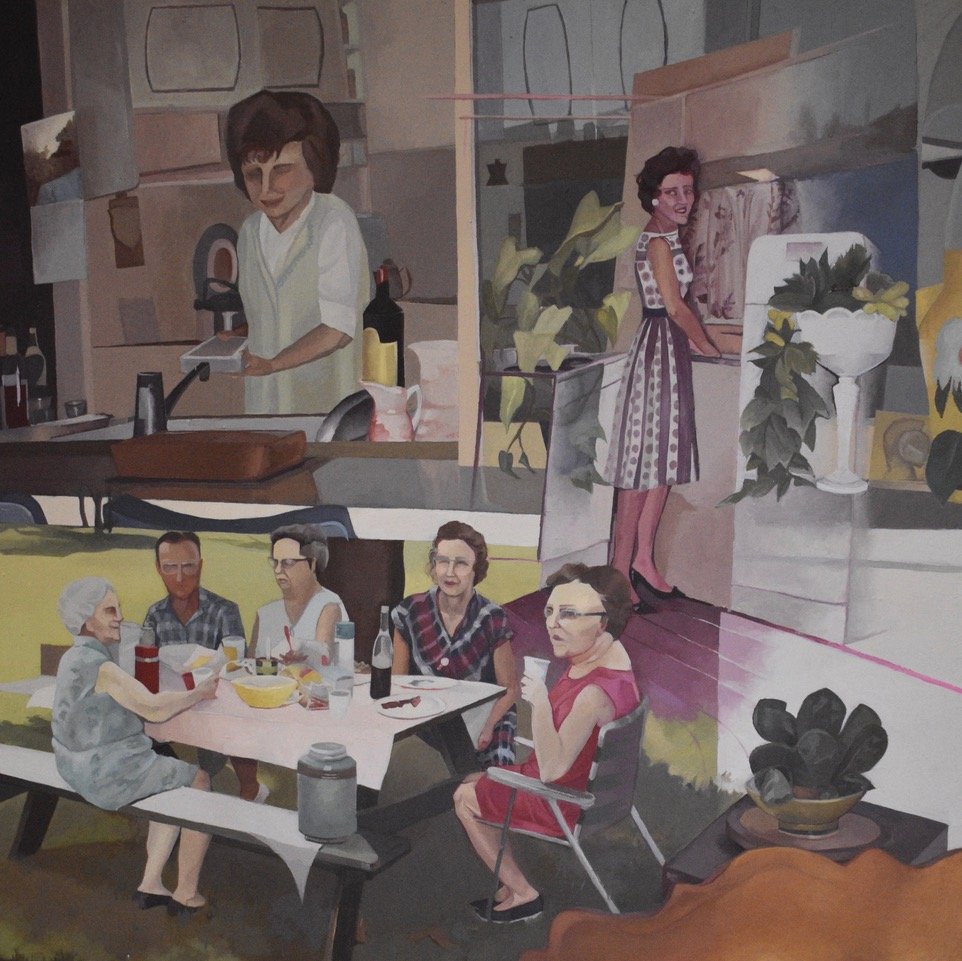Rachel Ahava Rosenfeld
We love these portraits and snapshots of daily life and interactions that Rachel Ahava Rosenfeld creates! She puts a new life on these remnants of the past by blocking out colors and shadows to capture their narrative. Her work explores relationships between memory, documentation, and nostalgia.
Rachel Ahava Rosenfeld is a painter working in River North, Chicago. She received her BA in Studio Art from Hollins University in Roanoke, Virginia, and MFA in Visual Art from Washing University in St Lois. She has continued learning at te Jerusalem Studio School master class in Civita Castellana as well as the University of Chicago and Hyde Park Art Center. Before relocating to Chicago, she had the opportunity to research and make art in Europe and the Middle East. Working out of her home studio, she revisits unresolved paintings and takes inspiration from an archive of found snapshot photographs. She as show in local museums, pop-up galleries, and group exhibits in the Chicago area, and throughout the United States.
Rachel explains her work:
A lifelong and impulsive desire to gather abandoned things is art the heart of my artistic practice . As a child, I habitually plucked dirt-caked “curiosities” out of the gutters, convinced that I could coax them into divulging the secrets of past lives, thus restoring some mythical status or magical power.
The original trophies gleaned from my suburban excavations are long gone. That same urge still entices me to hunt through the mundane material residue of modern lives. I am most fascinated by the yellowing family photographs that I harvest haphazardly from rural antique malls and online estate sales, adding them to treasure-trove of abandoned snapshots archived in my Chicago studio. There is a gem-like quality to these scraps, each one paradoxically characterized by a captivating familiarity and persistent, eery silence. I use paint as a vehicle to revive them. The painting process requires intimate scrutiny in search of the fragmentary histories that survive within minute hints. Each canvas is infused with absent memories, and all of the embedded potential that persists between the lines of half-told stories. The photographed scenes are re-invented by the perceptual and tactile interactions that unfold with each painted layer. One by one, they give movement and form to scenes otherwise fossilized on paper. Unlike the documents to which they refer, the paintings derive their power not from authenticity, but from possibility.
I approach the snapshots not only as a window into the past but as an artifact leftover by the unknowable multitude frozen there. I want to know how they interact with the world, and what emotions and curiosities they inspire in their new viewers. Holding the snapshots is an intimate experience, normally reserved for a tight circle of familiars. By exploring their physical qualities, I want to delve into the ways that heirlooms are limited by the tangible realities of flatness and fragility. Like an archaeologist picking the desert sand off a disjointed skeleton I hope that I can keep these lives from slipping below the metaphorical surface of the avalanches that characterize the 21st century.
The vignettes that intertwine and eclipse one another across the picture plane personify the frustrating impenetrability of the past. Freed from the burdens of authenticity, the ordinary past is transformed into a vernacular mythology . Every piece represents the intersections and contradictions between historic documentation, memory, and nostalgia. As a body of work, these paintings refer to both the tantalizing promise that emanates from lost treasures and the maddening reality that no matter what details survive from the past, they can only ever show us the ghosts of the glories and tragedies which preceded our own.
Originally published 9/9/2020
More on the blog:

